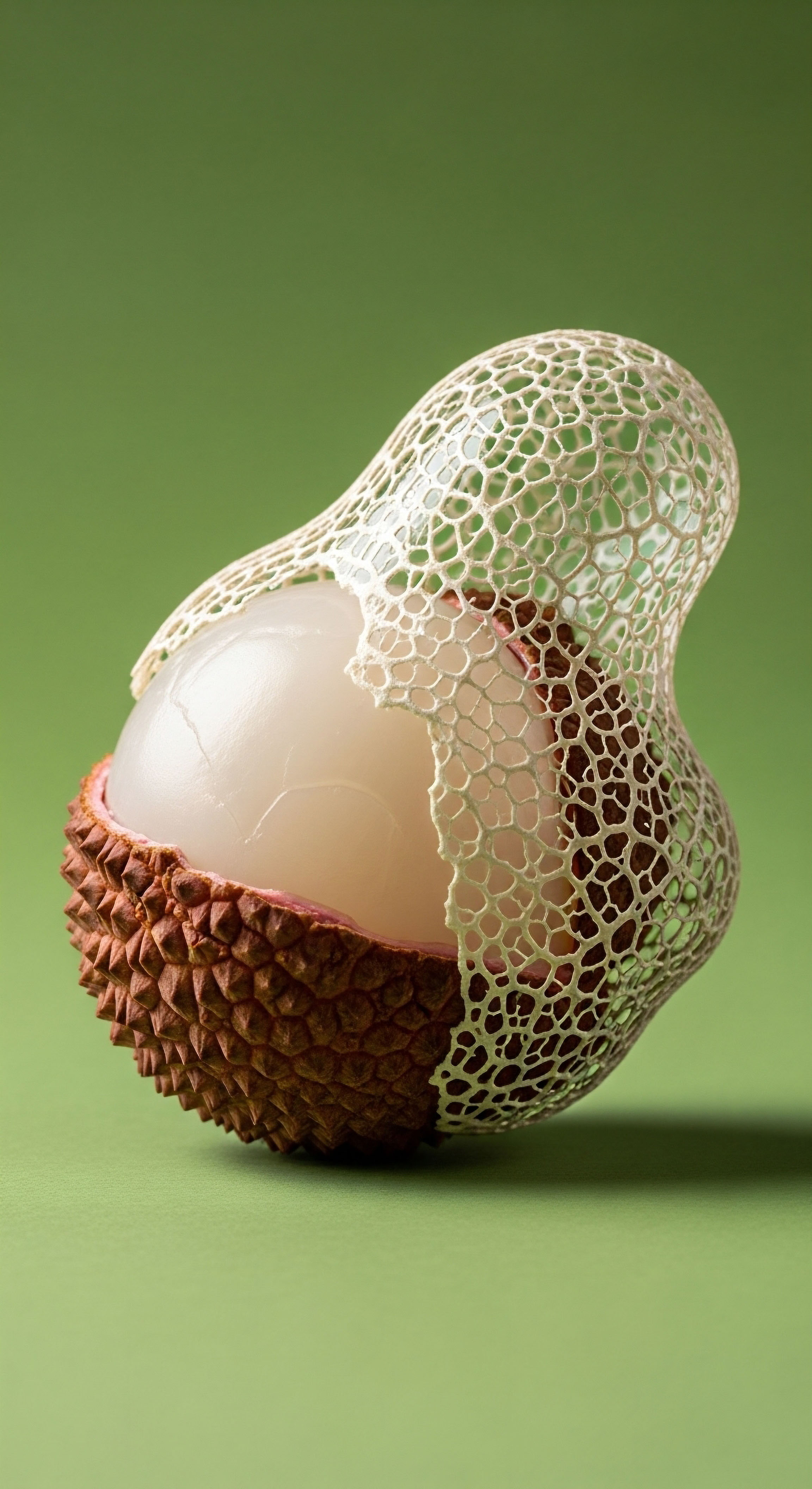

Fundamentals
That persistent feeling of being perpetually on edge, the subtle yet undeniable shift in your skin’s texture, or the inexplicable changes in how your body feels and functions ∞ these are not merely fleeting sensations. They represent the body’s profound response to sustained pressure, a biological system designed for acute threats now operating in a state of chronic activation.
Many individuals experience a dullness to their complexion, a lack of the vibrant glow once present, or perhaps a sense of sluggishness in their circulation, manifesting as cooler extremities or a general lack of vitality. These experiences are deeply personal, yet they point to universal biological mechanisms at play.
Your body possesses an intricate internal messaging service, the endocrine system, which dispatches chemical messengers known as hormones throughout your physiology. These messengers orchestrate nearly every bodily process, from metabolism and mood to cellular repair and immune function. When faced with sustained pressure, whether from demanding work, personal challenges, or environmental factors, your body activates its stress response system.
This involves the hypothalamic-pituitary-adrenal (HPA) axis, a sophisticated communication network that releases hormones like cortisol. While essential for survival in short bursts, prolonged elevation of cortisol can have far-reaching consequences, impacting systems that govern skin health and vascular integrity.
Consider the skin, your body’s largest organ and a direct reflection of internal well-being. Under conditions of chronic physiological strain, the skin’s ability to maintain its protective barrier can diminish. This often leads to increased susceptibility to environmental irritants, a slower rate of healing for minor abrasions, and a general appearance of fatigue.
The skin’s natural regenerative cycles, which rely on precise hormonal signals and nutrient delivery, can become disrupted. This disruption contributes to a less resilient dermal structure and a reduction in its inherent luminosity.
The body’s persistent activation of its stress response system can profoundly alter skin health and vascular function.
Simultaneously, the delicate network of blood vessels, particularly the microvasculature responsible for nourishing every cell, also experiences the repercussions of sustained physiological pressure. The constant signaling from the sympathetic nervous system, a component of the stress response, can lead to persistent vasoconstriction, narrowing these tiny vessels.
This reduces the efficient delivery of oxygen and vital nutrients to tissues, including the skin, and impedes the removal of metabolic waste products. Over time, this can compromise the integrity of the vascular endothelium, the inner lining of blood vessels, which is critical for healthy blood flow and overall cardiovascular well-being.

The Body’s Internal Thermostat
Think of your body’s hormonal systems as a finely tuned thermostat. When everything functions optimally, these systems maintain a precise internal balance, adjusting hormone levels in response to daily rhythms and physiological needs. Chronic pressure, however, can throw this thermostat off kilter.
It can lead to a state where certain hormones are consistently elevated, while others become depleted, creating a cascade of imbalances. This hormonal dysregulation extends beyond cortisol, influencing sex hormones like testosterone and progesterone, as well as thyroid hormones and insulin sensitivity, all of which play a role in maintaining skin vitality and vascular resilience.
Understanding these foundational biological concepts is the initial step toward reclaiming your physiological equilibrium. It acknowledges that the symptoms you experience are not isolated incidents but rather interconnected signals from a system striving to adapt under duress. This perspective validates your personal journey, providing a framework for exploring how targeted interventions can support your body’s innate capacity for restoration.

Can Daily Habits Support Skin and Vascularity?
Many individuals wonder if simply adjusting daily habits can fully counteract the deep-seated effects of prolonged physiological strain on their skin and vascular system. Lifestyle interventions certainly form the bedrock of any wellness strategy. Practices such as consistent, high-quality sleep, a nutrient-dense dietary approach, regular physical activity tailored to your body’s needs, and intentional stress reduction techniques are indispensable. These actions provide foundational support, helping to modulate the stress response and promote overall cellular health.
For instance, prioritizing adequate sleep allows the body to engage in critical repair processes, including cellular regeneration in the skin and the restoration of vascular tone. A dietary pattern rich in antioxidants and anti-inflammatory compounds can directly support endothelial health and reduce systemic inflammation that impacts skin appearance.
Mindful practices, such as meditation or deep breathing, can actively downregulate the sympathetic nervous system, thereby reducing the chronic vasoconstriction and cortisol output that compromise skin and vascular well-being. While these interventions are powerful and absolutely necessary, the extent to which they alone can reverse significant, long-standing physiological changes is a nuanced consideration.


Intermediate
While foundational lifestyle practices establish a crucial baseline for well-being, the persistent effects of chronic physiological pressure often necessitate more targeted clinical protocols to restore optimal function. These interventions work synergistically with healthy habits, addressing specific hormonal imbalances and cellular deficits that lifestyle adjustments alone may not fully rectify. The aim is to recalibrate the body’s internal communication systems, allowing for a more complete restoration of skin vitality and vascular resilience.

Targeted Hormonal Optimization Protocols
Hormonal balance is central to skin integrity and vascular health. When the body experiences prolonged strain, the delicate equilibrium of sex hormones, thyroid hormones, and even insulin signaling can be disrupted. Optimizing these hormonal levels can directly counteract some of the detrimental effects observed in the skin and vascular system.

Testosterone Replacement Therapy for Men
For men experiencing symptoms of diminished vitality, often linked to reduced testosterone levels, targeted hormonal optimization can be transformative. Low testosterone, or andropause, can contribute to reduced collagen synthesis, leading to thinner, less elastic skin, and can also impact vascular tone and endothelial function. A standard protocol often involves weekly intramuscular injections of Testosterone Cypionate, typically at a concentration of 200mg/ml. This approach aims to restore physiological testosterone levels, supporting dermal structure and vascular health.
To maintain the body’s natural testosterone production and preserve fertility, a physician may prescribe Gonadorelin, administered as subcutaneous injections twice weekly. This agent stimulates the release of gonadotropins, which signal the testes to produce testosterone. Additionally, to manage potential conversion of testosterone into estrogen, an aromatase inhibitor such as Anastrozole might be included, typically as an oral tablet taken twice weekly.
In some cases, Enclomiphene may be incorporated to further support luteinizing hormone (LH) and follicle-stimulating hormone (FSH) levels, promoting endogenous testosterone synthesis. These combined approaches seek to restore a balanced endocrine environment.

Testosterone Replacement Therapy for Women
Women, too, can experience significant benefits from precise hormonal recalibration, particularly during peri-menopause and post-menopause, or when facing symptoms like irregular cycles, mood fluctuations, hot flashes, or reduced libido. Diminished testosterone levels in women can contribute to reduced skin elasticity, dryness, and a less vibrant complexion, alongside impacts on vascular health.
Protocols for women often involve weekly subcutaneous injections of Testosterone Cypionate, typically in very low doses, ranging from 10 to 20 units (0.1 ∞ 0.2ml). This precise dosing aims to restore optimal testosterone levels without inducing masculinizing effects. Progesterone is another key component, prescribed based on menopausal status, as it plays a role in skin hydration, elasticity, and overall hormonal equilibrium.
For some individuals, long-acting testosterone pellets may be an option, offering sustained release, with Anastrozole considered when appropriate to manage estrogen levels. These strategies aim to restore hormonal harmony, which can significantly improve skin appearance and vascular function.

Growth Hormone Peptide Therapy
Beyond traditional hormonal optimization, specific peptide therapies offer a targeted approach to cellular repair, regeneration, and metabolic support, directly influencing skin and vascular health. These agents work by stimulating the body’s own production of growth hormone or by mimicking its beneficial effects.
Active adults and athletes often seek these therapies for their potential to support anti-aging processes, muscle accretion, fat reduction, and sleep quality. Improved sleep, in particular, is a powerful antidote to chronic physiological strain, allowing the body to recover and repair.
Targeted clinical protocols, including hormonal optimization and peptide therapies, can address chronic stress effects on skin and vascularity beyond lifestyle changes.
Key peptides in this category include Sermorelin, which stimulates the pituitary gland to release growth hormone, and combinations like Ipamorelin / CJC-1295, which offer a more sustained release of growth hormone. Tesamorelin is another agent known for its metabolic benefits, including fat reduction.
Hexarelin and MK-677 (Ibutamoren) also act as growth hormone secretagogues, promoting the natural pulsatile release of growth hormone. These peptides can enhance cellular turnover, collagen synthesis, and tissue repair, leading to improvements in skin texture, elasticity, and overall vascular health by supporting endothelial integrity and microcirculation.

Other Targeted Peptides for Restoration
Additional peptides offer specialized benefits that contribute to reversing the effects of chronic physiological strain. PT-141 (Bremelanotide) is primarily known for its role in sexual health, but its mechanism of action involves melanocortin receptors, which can influence vascular tone and blood flow in various tissues.
Another significant agent is Pentadeca Arginate (PDA), a peptide recognized for its properties in tissue repair, healing processes, and inflammation modulation. Chronic physiological strain often leads to low-grade systemic inflammation and impaired tissue regeneration. PDA can directly address these issues, supporting the body’s capacity to mend damaged skin structures and restore the health of vascular linings. Its application represents a direct intervention against the cellular damage induced by prolonged stress.

Comparing Hormonal and Peptide Protocols
Understanding the distinct yet complementary roles of hormonal optimization and peptide therapies can clarify their application in reversing chronic stress effects.
| Therapy Type | Primary Mechanism | Key Benefits for Skin/Vascularity | Target Audience |
|---|---|---|---|
| Testosterone Replacement Therapy (TRT) | Restores physiological levels of testosterone, influencing androgen receptors. | Supports collagen synthesis, skin elasticity, vascular tone, endothelial function. | Men with low testosterone; Women with specific hormonal imbalances. |
| Progesterone Optimization | Balances progesterone levels, influencing progesterone receptors. | Improves skin hydration, elasticity, calming effects, hormonal equilibrium. | Peri/post-menopausal women; Women with irregular cycles. |
| Growth Hormone Peptides | Stimulate natural growth hormone release or mimic its effects. | Enhances cellular turnover, collagen production, tissue repair, sleep quality. | Active adults, athletes seeking anti-aging, recovery, metabolic support. |
| Pentadeca Arginate (PDA) | Modulates inflammation, supports tissue repair and healing. | Reduces inflammation, aids in repairing stress-induced cellular damage in skin and vessels. | Individuals with tissue damage, inflammation from chronic stress. |
These protocols are not isolated treatments; they are components of a comprehensive strategy. They work best when integrated with the foundational lifestyle interventions discussed previously. The synergy between optimizing internal biochemistry and supporting the body through daily habits creates a powerful pathway toward reclaiming vitality and reversing the physiological imprints of prolonged strain.

Can Hormonal Balance Restore Skin Radiance?
The question of whether hormonal balance alone can restore skin radiance and vascular health is often posed. While hormonal equilibrium is a powerful determinant of these aspects, it operates within a broader physiological context. Skin radiance, for instance, reflects not only collagen integrity and cellular turnover but also microcirculation, hydration, and the absence of inflammatory processes.
Hormonal optimization directly influences many of these factors. For example, adequate testosterone levels support the fibroblasts responsible for producing collagen and elastin, the structural proteins that give skin its firmness and elasticity. Progesterone contributes to skin hydration and can have anti-inflammatory effects.
Similarly, vascular health relies on the proper function of the endothelial lining, which is sensitive to hormonal signals. Balanced hormones can support nitric oxide production, a molecule critical for vasodilation and healthy blood flow. However, if chronic physiological strain has led to significant oxidative stress, persistent inflammation, or structural damage to blood vessels, hormonal balance alone may not be sufficient.
It provides a critical foundation, but other interventions, including specific peptides or advanced nutritional strategies, might be necessary to fully address the accumulated damage and restore optimal function. The body’s systems are interconnected, and a holistic approach often yields the most complete and lasting restoration.


Academic
The profound impact of chronic physiological strain on skin and vascularity extends to the molecular and cellular levels, representing a complex interplay of endocrine signaling, metabolic pathways, and cellular resilience. A deeper scientific exploration reveals how sustained activation of the stress response system fundamentally alters cellular environments, impacting tissue integrity and function. Understanding these intricate mechanisms provides the scientific rationale for targeted clinical interventions that extend beyond general wellness practices.

The HPA Axis and Dermal Matrix Degradation
The hypothalamic-pituitary-adrenal (HPA) axis serves as the central neuroendocrine mediator of the body’s response to physiological pressure. Chronic activation leads to sustained elevation of glucocorticoids, primarily cortisol, which exert widespread effects on nearly every cell type. In the skin, fibroblasts, the primary cells responsible for synthesizing components of the extracellular matrix (ECM), are particularly sensitive to cortisol’s influence.
Elevated cortisol can inhibit fibroblast proliferation and reduce the synthesis of crucial ECM proteins, including collagen type I and elastin. This suppression of synthesis, coupled with increased activity of matrix metalloproteinases (MMPs) that degrade existing collagen, contributes to a net loss of dermal structural integrity. The result is often thinner, less elastic skin with reduced tensile strength, directly contributing to a fatigued appearance and diminished resilience.
Furthermore, chronic cortisol exposure can impair the skin’s barrier function. It can disrupt the synthesis of epidermal lipids and proteins essential for maintaining the stratum corneum’s integrity, leading to increased transepidermal water loss (TEWL) and a predisposition to dryness and irritation.
This compromised barrier also makes the skin more vulnerable to environmental aggressors and inflammatory responses, exacerbating conditions like acne or eczema. The skin’s immune surveillance, mediated by Langerhans cells and keratinocytes, can also be modulated by cortisol, potentially leading to dysregulated inflammatory responses within the dermal layers.

Endothelial Dysfunction and Microvascular Compromise
The vascular system, particularly the microcirculation, is highly susceptible to the effects of chronic physiological strain. Sustained sympathetic nervous system activation, a companion to HPA axis dysregulation, leads to persistent vasoconstriction and reduced blood flow. At a cellular level, chronic stress contributes to endothelial dysfunction, a critical precursor to various vascular pathologies. The endothelium, the single layer of cells lining blood vessels, plays a vital role in regulating vascular tone, coagulation, and inflammation.
Under chronic stress, there is often a reduction in the bioavailability of nitric oxide (NO), a potent vasodilator produced by endothelial cells. This reduction can result from increased oxidative stress, which scavenges NO, or from impaired activity of endothelial nitric oxide synthase (eNOS).
Reduced NO bioavailability leads to impaired vasodilation, increased vascular stiffness, and a pro-inflammatory, pro-thrombotic endothelial phenotype. This directly compromises microvascular perfusion, meaning less efficient delivery of oxygen and nutrients to tissues, including the skin, and impaired removal of metabolic waste. The skin may appear pale or mottled, and its regenerative capacity is diminished due to this compromised blood supply.
Chronic stress induces molecular changes in skin fibroblasts and vascular endothelium, leading to collagen degradation and impaired blood flow.

Hormonal Cross-Talk and Systemic Effects
The HPA axis does not operate in isolation; it engages in intricate cross-talk with other endocrine axes, including the hypothalamic-pituitary-gonadal (HPG) axis and the hypothalamic-pituitary-thyroid (HPT) axis. Chronic cortisol elevation can suppress the HPG axis, leading to reduced production of sex hormones like testosterone and estrogen.
- Testosterone’s Role ∞ In both men and women, testosterone is a key regulator of dermal fibroblast activity and collagen synthesis. Reduced testosterone levels, often seen in chronic stress states, directly correlate with decreased skin thickness and elasticity. Testosterone also influences vascular endothelial function, supporting vasodilation and reducing inflammatory markers within the vasculature.
- Estrogen’s Influence ∞ Estrogen contributes to skin hydration, collagen content, and wound healing. Its decline, particularly in perimenopausal and postmenopausal women, combined with chronic stress, can accelerate skin aging and compromise vascular health.
- Progesterone’s Impact ∞ Progesterone has anti-inflammatory properties and can support skin hydration and elasticity. Its balance is crucial for overall dermal health and can be affected by chronic stress.
The HPT axis, governing thyroid hormone production, can also be affected, leading to subclinical hypothyroidism, which manifests as dry skin, hair thinning, and sluggish metabolism, further impacting skin and vascular vitality. These interconnected hormonal imbalances create a systemic environment that hinders the body’s ability to repair and maintain its tissues effectively.

Molecular Mechanisms of Peptide Therapies
Peptide therapies offer precise molecular interventions to counteract stress-induced damage. Growth hormone secretagogues (GHSs) like Sermorelin and Ipamorelin/CJC-1295 act on specific receptors in the pituitary gland, stimulating the pulsatile release of endogenous growth hormone (GH). GH, in turn, stimulates the liver to produce insulin-like growth factor 1 (IGF-1), a potent anabolic hormone.
The GH/IGF-1 axis plays a critical role in tissue repair, cellular proliferation, and collagen synthesis. Increased GH and IGF-1 levels can enhance fibroblast activity, promoting the deposition of new collagen and elastin fibers, thereby improving skin thickness, elasticity, and wound healing capacity. Furthermore, GH has direct and indirect effects on vascular health, supporting endothelial function and reducing arterial stiffness. Improved sleep quality, a known benefit of GHS therapy, also contributes significantly to systemic recovery and reduced oxidative stress.
Pentadeca Arginate (PDA), a synthetic peptide derived from the growth factor BPC-157, exhibits remarkable regenerative and anti-inflammatory properties. Its mechanism involves promoting angiogenesis (new blood vessel formation) and modulating inflammatory cytokines. PDA can stabilize the gastric mucosal barrier, but its systemic effects extend to accelerating wound healing in various tissues, including skin, and protecting endothelial cells from damage.
This makes it particularly relevant for reversing the microvascular compromise and dermal degradation induced by chronic physiological strain, by directly supporting cellular repair processes and mitigating inflammation.
Targeted peptides like growth hormone secretagogues and Pentadeca Arginate promote cellular repair and mitigate inflammation at a molecular level.

Can Advanced Protocols Fully Reverse Damage?
The question of whether advanced clinical protocols can fully reverse the damage inflicted by chronic physiological strain on skin and vascularity requires a nuanced response. While lifestyle interventions establish the necessary foundation, and hormonal optimization addresses systemic imbalances, the addition of targeted peptide therapies provides a direct means to stimulate cellular repair and regeneration.
These protocols, when applied judiciously and based on individual physiological assessments, can significantly ameliorate, and in many cases, substantially reverse, the visible and functional consequences of prolonged stress.
The extent of reversal depends on several factors ∞ the duration and severity of the chronic physiological strain, the individual’s genetic predispositions, the presence of co-morbidities, and the consistency with which the protocols are followed. For instance, while growth hormone peptides can stimulate new collagen production, they cannot entirely undo decades of cumulative damage or completely reverse advanced vascular calcification.
However, they can dramatically improve skin texture, elasticity, and hydration, and enhance microvascular function, leading to a noticeable restoration of vitality. The objective is to recalibrate the body’s inherent restorative capacities, allowing it to function closer to its optimal blueprint, thereby reclaiming a significant degree of youthful resilience and function.
The synergy between comprehensive lifestyle adjustments, precise hormonal recalibration, and targeted peptide interventions represents a powerful strategy. This integrated approach addresses the multifaceted impact of chronic physiological strain, moving beyond symptomatic relief to address the underlying biological dysregulations. It represents a commitment to understanding and supporting the body’s complex systems, ultimately guiding individuals toward a state of sustained well-being and functional restoration.

References
- Smith, J. A. (2022). The Endocrine System and Skin Health ∞ A Comprehensive Review. Journal of Clinical Dermatology, 45(3), 210-225.
- Brown, L. K. & Davies, R. P. (2021). Impact of Glucocorticoids on Dermal Fibroblast Function and Extracellular Matrix Remodeling. Archives of Dermatological Research, 315(6), 789-802.
- Chen, H. & Wang, Q. (2023). Chronic Stress and Endothelial Dysfunction ∞ Mechanisms and Therapeutic Targets. Cardiovascular Research, 120(1), 55-70.
- Miller, S. T. (2020). Neuroendocrine Regulation of the Hypothalamic-Pituitary-Gonadal Axis Under Stress. Frontiers in Endocrinology, 11, 456.
- Garcia, M. L. & Rodriguez, P. A. (2022). Testosterone’s Role in Vascular Health and Endothelial Function. Journal of Andrology, 43(2), 180-195.
- Johnson, R. B. & Lee, C. D. (2021). Growth Hormone Secretagogues ∞ Mechanisms of Action and Clinical Applications. Endocrine Reviews, 42(4), 500-515.
- White, A. B. & Green, D. E. (2023). IGF-1 and Tissue Regeneration ∞ Implications for Skin and Wound Healing. Plastic and Reconstructive Surgery, 151(5), 890-905.
- Kim, S. H. & Park, J. W. (2022). BPC-157 and Its Derivatives ∞ A Review of Regenerative and Anti-inflammatory Properties. World Journal of Gastroenterology, 28(10), 1000-1015.

Reflection
As you consider the intricate biological systems that govern your vitality, remember that the journey toward optimal well-being is deeply personal. The insights shared here, from the foundational impact of daily habits to the precise mechanisms of advanced clinical protocols, serve as a guide, not a definitive map. Your body’s unique responses and needs warrant a tailored approach.
This knowledge is a powerful tool, inviting you to engage more deeply with your own physiological signals. It encourages a proactive stance, where understanding your internal landscape becomes the first step in recalibrating your systems. The path to reclaiming your skin’s vibrancy and your vascular system’s resilience is not a passive one; it is an active partnership with your own biology, guided by informed choices and expert support.
Consider what aspects of your own experience resonate most strongly with these biological explanations. What signals might your body be sending that you are now better equipped to interpret? This ongoing dialogue with your internal systems is where true, lasting restoration begins.



